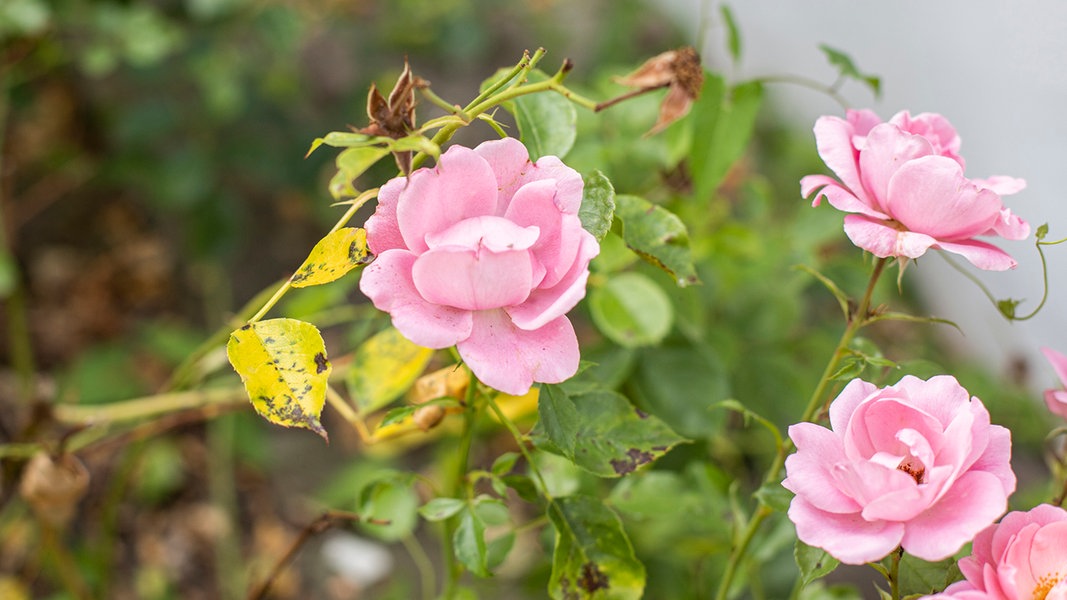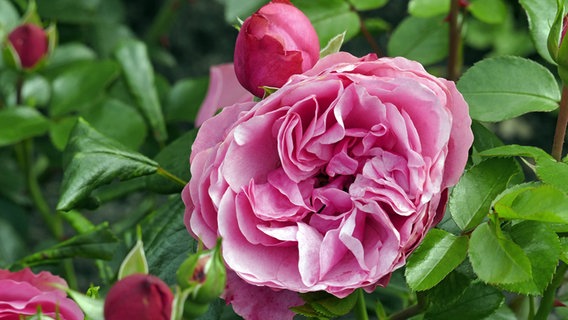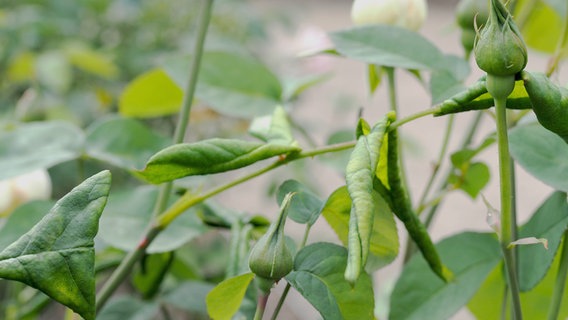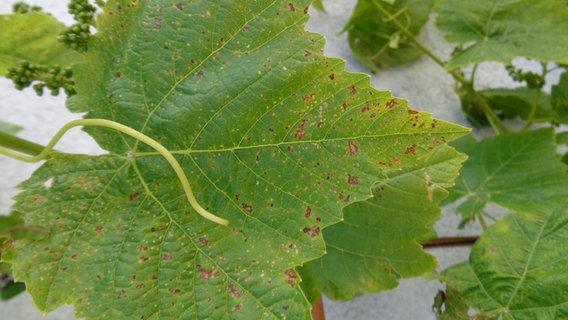Status: 07.06.2023 2:39 p.m
Orange-red fungal spores, black spots on the leaves and green insects: how do you prevent, recognize and combat the most common rose diseases and rose pests?
Wer If you want to plant roses, the “queen of flowers”, in your garden, you will soon have to deal with possible diseases and pests. In order to prevent typical rose diseases, a few basic things should be observed, because: Healthy and strong roses are attacked much less frequently than already weakened plants.
Preventive measures for rose diseases and pests
- Already at the time of purchase on that Pay attention to the ADR seal, which distinguishes particularly resistant varieties.
- Always plant roses in a sunny and dry location with sufficient distance between the individual plants.
- A regular and correct one Pruning back in spring ensures good ventilation.
- For an optimal supply of nutrients, it is best to use potassium-rich, low-nitrogen rose fertilizer.
- Always water roses close to the ground so that the leaves remain dry.
- Spray roses in spring and summer with a decoction made from field horsetail or a household remedy made from garlic and onions.
Blackspot: Black-brown spots and yellow leaves
The black-brown, star-shaped spots give the blackspot its name.
Blackspot is one of the most common and stubborn rose diseases. In the case of the so-called black spot disease, black-brown spots that diverge in a star shape form from May onwards, before the rose petals turn yellow and finally fall off. The infected leaves must be meticulously removed immediately and disposed of with household waste so that the blackspot does not spread further. In stubborn cases, treatment with chemical pesticides (fungicides) is necessary. Always follow the manufacturer’s instructions for use exactly.
Powdery mildew: White, mealy coating
The so-called fair-weather fungus among the fungal diseases is powdery mildew. With a combination of over 20 degrees and high humidity, it also spreads to roses. A white, floury coating can then be seen on the affected areas. A simple household remedy is recommended for natural control and prevention: Mix one part raw milk or whole milk (no UHT milk) with eight parts water. Put the whole thing in a spray bottle and spray on the rose once a week.
Rose rust: Orange-red pustules and yellow-red spots
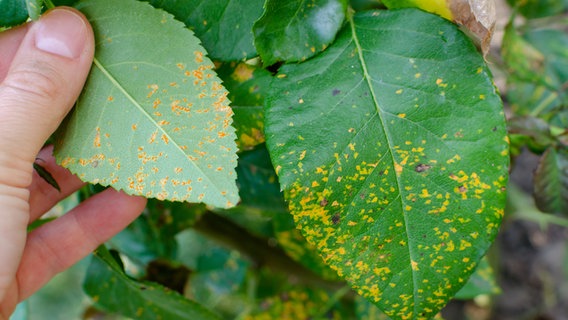
Rose rust is first visible on the underside of the leaf. Pin-sized spore deposits form here.
Rose rust is sometimes confused with blackspot since both rose diseases affect the leaves. But that’s not a problem, since the recommended procedure for an infestation is almost identical. If the plant is diseased, orange-red pustules become visible on the underside of the leaves from mid-March, which can be crumbled between your fingers. A short time later (from around May) small, yellow-red spots also appear on the upper side of the leaves. At the end of August, the pustules turn dark brown to black.
All infected leaves should be removed and disposed of with household waste, including fallen leaves. In the case of a light infestation, regular pruning in the following spring is usually sufficient. However, if the infestation is severe or recurring, chemical pesticides should be used between April and July.
Greater Aphid: Sticky green insects
The rose aphid is green and about three to four millimeters long. It multiplies mainly in summer and appears on diseased plants on young shoots, leaves and flower buds. If possible, use environmentally and bee-friendly means to combat it. A decoction of nettles or tansy, for example, acts naturally against aphids.
Rosenzikade: The cream-colored larva
The cream-colored larvae of the planthopper, which are about three millimeters in size, suck the leaf green from the leaves from May. These then get white or yellowish spots. The insect sits under the leaves and occurs more frequently when there is a drought. It is pale green when fully grown and has wings. In the case of a severe infestation, you can use the ecological pesticide neem oil, for example. Otherwise, the affected rose petals will dry up and fall off.
Further information

